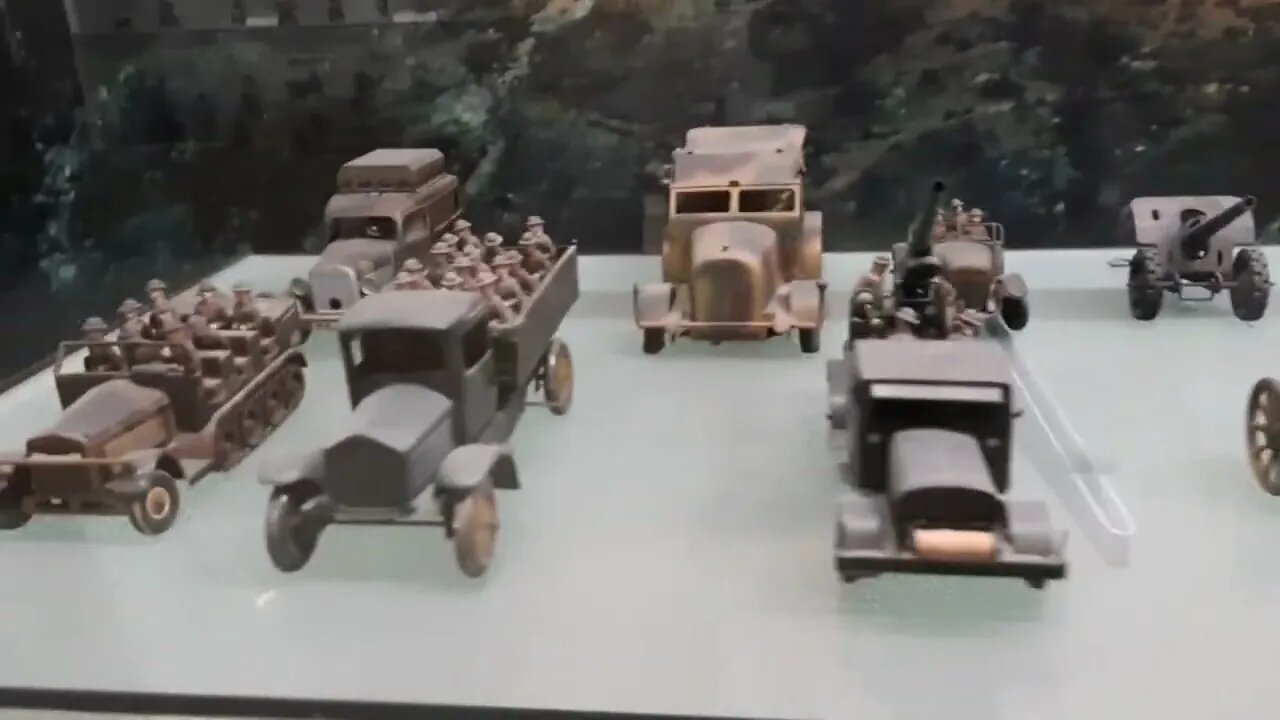Premium Only Content

Double Statue two face statue, cavalry, british army, french army and japan army in salarjung museum
Double Statue two face statue, cavalry, british army, french army and japan army in salarjung museum
The Double Statue of Mephistopheles & Margaretta : Salar Jung Museum
Children Gallery
The objects on display in the Children’s section of the museum are a testimony to the vast range of interests of Salar Jung III in collecting objects of assorted nature. The objects assimilated by him during his childhood are also on view in this gallery. The exhibits housed in the section provide informational education to children who come to visit the gallery.
The gallery has a good number of bronze figures, porcelain objects, musical boxes, marble sculptures and toys from different parts of the world. Geisha dolls from Japan, a functional train-set from England and a set of the seven dwarfs from ‘Snow White and the seven dwarfs’ are a some of the assortments seen in this section. The gallery not only attracts the youth but also the elderly, a huge collection of toy soldiers arranged to give the viewer a fair idea of warfare during the Second World War. Apart from artillery and infantry, the gallery has toys depicting the Air-force, tanks and medical staff.
Exquisitely modelled wild animals in bronze and metal such as Elephants, Rhinos, Tiger etc. are displayed. Clay models of domesticated animals, soap-stone carvings from Korea and Japan, objects decorated with Mother-of-pearl, sculptures depicting the different breed of dogs in metal and porcelain are found in the gallery.
The collection of fire arms at the museum is rare and varied
The first weapons used by the Stone Age man were knives, axes, spears fitted with sharpened flints. Around 1300 BC iron swords and shields showed up. Cavalry first appeared in about 1300 AD on the battle fields of western Asia and the horse man, armed with sword and lance could run down the infantry easily.
Challenge to the supremacy of Cavalry came first, from long bow and next, cross bow and next, fire arms which date from 1326 A.D. The first firing mechanism was matchlock, introduced in the 15th century. It gave way, in 17th century, to the flint lock, in general use until 1840. Muskets with rifled barrels came in 19th century. With the invention of percussion cap (a small copper cap or cylinder) which also made possible the use of cartridge, revolver became possible. The fully automatic rifle appeared in 1908. Machine gun of the modern type followed in later half of 19th century.
The Salar Jung Museum’s collection of arms comprises 1,236 traditional weapons and 188 fire arms. Besides India, the Museum’s arms come from countries like England, France, Germany, Belgium, USA, Turkey, Persia and China. Majority of them show decorations done in enamelling, damascening, engraving, jewelling and embossing.
In the mixture of Museum’s swords, daggers, guptis (concealed swords), shields, battle-axes, spears, and armour parts like helmets, armguards, coat of mail and char-aina (four protective metal plates) the visitors will find a variety of materials and designs used.
The Indian rulers whose names are inscribed on the swords and daggers are the Mughul emperors Humayum, Jahangir, Shah Jahan, Aurangazeb and Bahadur Shah and Qutub Shahi rulers Abdullah Qutub Shah and Sultan Abul Hasan Tana Shah. About English swords, mention may be made of a sword presented in 1875 by the Prince of Wales to Sir Salar Jung I (1829-1883). The blade was manufactured by Wilkinson in London. A curved sword is a present to Sir Salar Jung I from Viscount Kitchner, the then commander-in-chief of Indian army. The blade is beautifully etched.
The collection of fire arms is equally rare and varied. The flint-locks, match-locks, repercussion-locks, muzzle-loading, breech-loading and automatic guns, blunderbusses, ordinary pistols and revolvers ranging from 17th century to 20th century are interesting. Well-known gun manufacturers represented in the collection are: Smith and Wesson, Samuel Rock, Devisme A Paris, Wood and Sons. The pistol bearing inscription referring to the warrior prince Tipu Sultan is a proud possession of the Museum.
-
 1:15:00
1:15:00
Awaken With JP
7 hours agoMerry Christmas NOT Happy Holidays! Special - LIES Ep 71
99.4K98 -
 1:42:21
1:42:21
The Quartering
9 hours agoTrump To INVADE Mexico, Take Back Panama Canal Too! NYC Human Torch & Matt Gaetz Report Drops!
88.9K89 -
 2:23:15
2:23:15
Nerdrotic
8 hours ago $10.10 earnedA Very Merry Christmas | FNT Square Up - Nerdrotic Nooner 453
67.4K6 -
 1:14:05
1:14:05
Tucker Carlson
8 hours ago“I’ll Win With or Without You,” Teamsters Union President Reveals Kamala Harris’s Famous Last Words
150K298 -
 1:58:31
1:58:31
The Dilley Show
8 hours ago $30.88 earnedTrump Conquering Western Hemisphere? w/Author Brenden Dilley 12/23/2024
125K32 -
 1:09:59
1:09:59
Geeks + Gamers
9 hours agoSonic 3 DESTROYS Mufasa And Disney, Naughty Dog Actress SLAMS Gamers Over Intergalactic
83.7K20 -
 51:59
51:59
The Dan Bongino Show
10 hours agoDemocrat Donor Admits The Scary Truth (Ep. 2393) - 12/23/2024
807K2.68K -
 2:32:15
2:32:15
Matt Kohrs
21 hours agoRumble CEO Chris Pavlovski Talks $775M Tether Partnership || The MK Show
121K31 -
 28:23
28:23
Dave Portnoy
21 hours agoDavey Day Trader Presented by Kraken - December 23, 2024
155K42 -
 59:29
59:29
BonginoReport
12 hours agoTrump, Murder Plots, and the Christmas Miracle: Evita + Jack Posobiec (Ep.110) - 12/23/2024
161K131